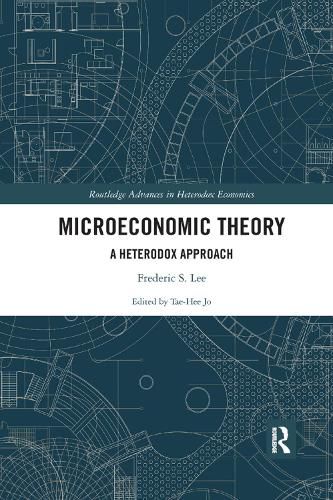Readings Newsletter
Become a Readings Member to make your shopping experience even easier.
Sign in or sign up for free!
You’re not far away from qualifying for FREE standard shipping within Australia
You’ve qualified for FREE standard shipping within Australia
The cart is loading…






Microeconomic Theory: A Heterodox Approach develops a heterodox economic theory that explains the economy as the social provisioning process at the micro level. Heterodox microeconomics explores the economy with a focus on its constituent parts and their reproduction and recurrence, their integration qua interdependency by non-market and market arrangements and institutions, and how the system works as a whole.
This book deals with three theoretical concerns. Due to the significance of the price mechanism to mainstream economics, a theoretical concern of the book is the business enterprise, markets, demand, and pricing. Also, since heterodox economists see private investment, consumption and government expenditures as the principal directors and drivers of economic activity, a second theoretical concern is business decision-making processes regarding investment and production, government expenditure decisions, the financing of investment, the profit mark-up and the wage rate, and taxes. Finally, the third theoretical concern of the book is the delineation of a non-equilibrium disaggregated price-output model of the social provisioning process.
This book explores the integration of these various theories with a theoretical model of the economy and how this forms a theory that can be identified as heterodox microeconomics. It will be of interest to both postgraduates and researchers.
$9.00 standard shipping within Australia
FREE standard shipping within Australia for orders over $100.00
Express & International shipping calculated at checkout
Microeconomic Theory: A Heterodox Approach develops a heterodox economic theory that explains the economy as the social provisioning process at the micro level. Heterodox microeconomics explores the economy with a focus on its constituent parts and their reproduction and recurrence, their integration qua interdependency by non-market and market arrangements and institutions, and how the system works as a whole.
This book deals with three theoretical concerns. Due to the significance of the price mechanism to mainstream economics, a theoretical concern of the book is the business enterprise, markets, demand, and pricing. Also, since heterodox economists see private investment, consumption and government expenditures as the principal directors and drivers of economic activity, a second theoretical concern is business decision-making processes regarding investment and production, government expenditure decisions, the financing of investment, the profit mark-up and the wage rate, and taxes. Finally, the third theoretical concern of the book is the delineation of a non-equilibrium disaggregated price-output model of the social provisioning process.
This book explores the integration of these various theories with a theoretical model of the economy and how this forms a theory that can be identified as heterodox microeconomics. It will be of interest to both postgraduates and researchers.